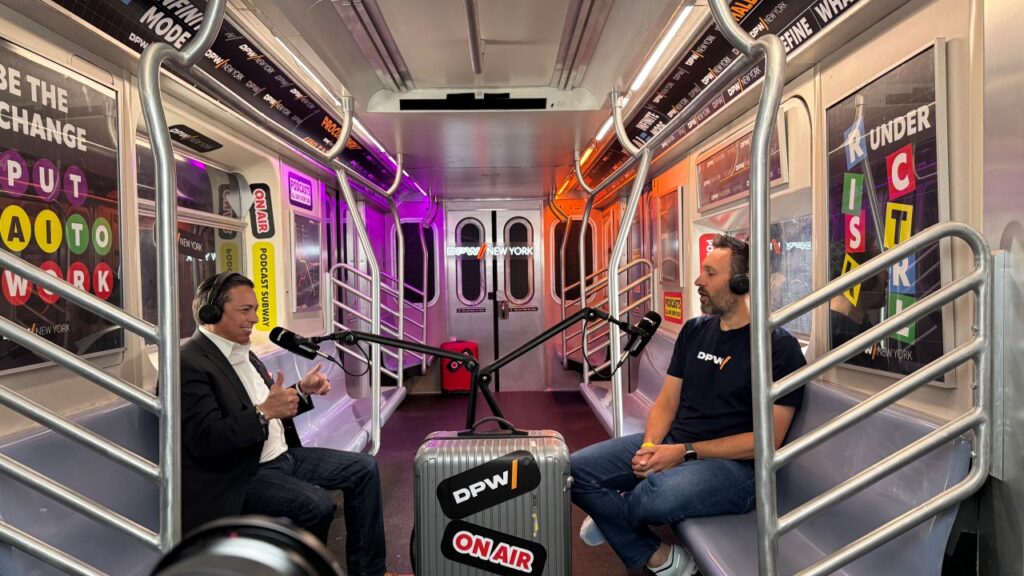
Live from the floor of DPW in New York, I had the privilege of joining my long-time friend Mark Perera on the DPW podcast. We explored the future of technology, business, and leadership, while also looking back to our roots in Silicon Valley during the rise of Web 1.0, Web 2.0, Social Media, and smartphones.
What made it truly special wasn’t just the set, it was the conversations I had with procurement leaders, innovators, and partners before stepping up to speak on behalf of ServiceNow. Listening to their challenges, their questions, and even what they hadn’t yet thought about, fueled what I brought to the stage and the podcast, and beyond.
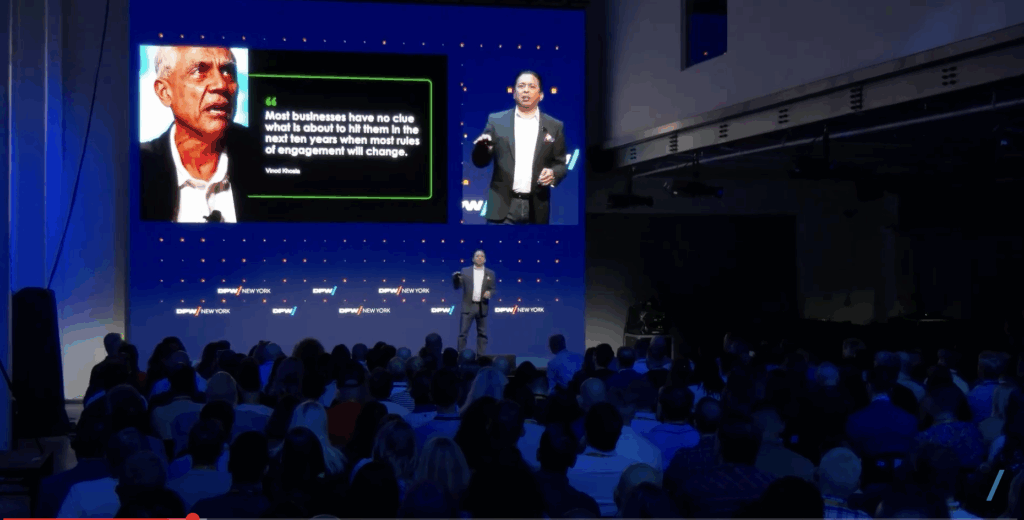
I’ve studied disruption and transformation in Silicon Valley and its impact around the world for a long time. Again and again, I’ve seen the same pattern: new technology arrives, and companies use it to optimize what they already do, just faster, cheaper, more efficient moving forward. That’s necessary, but it’s not transformative. And these times are in need of transformative strategies.
Please excuse the plug, but it’s honest in its intent. My latest book, Mindshift: Transform Leadership, Drive Innovation, and Reshape the Future,is about breaking that cycle. It’s about giving ourselves permission to think differently, anticipating change and what comes next before disruption forces our hand. More so, it shows how to do things differently.
The Shift: From What We Did to What Would AI Do? – #WWAID
Throughout history, businesses have applied every major wave of technology to optimize the past. We make existing processes faster, more efficient, less expensive, more scalable. That’s progress and it is valuable. At the same time, it can also hold us to iteration, aiming to do what we did yesterday better tomorrow.
AI, however, invites a different question: What if the goal isn’t just to improve yesterday’s processes, but to invent tomorrow’s possibilities?
That’s where I ask WWAID, or What Would AI Do?
It’s a mental framework I use to break free from my own biases, expertise, and assumptions. Instead of asking “what would I do with AI?,” a question tethered to my perceived worldview, I try to explore the unknown for growth, and ask, “what would AI do in this moment?”
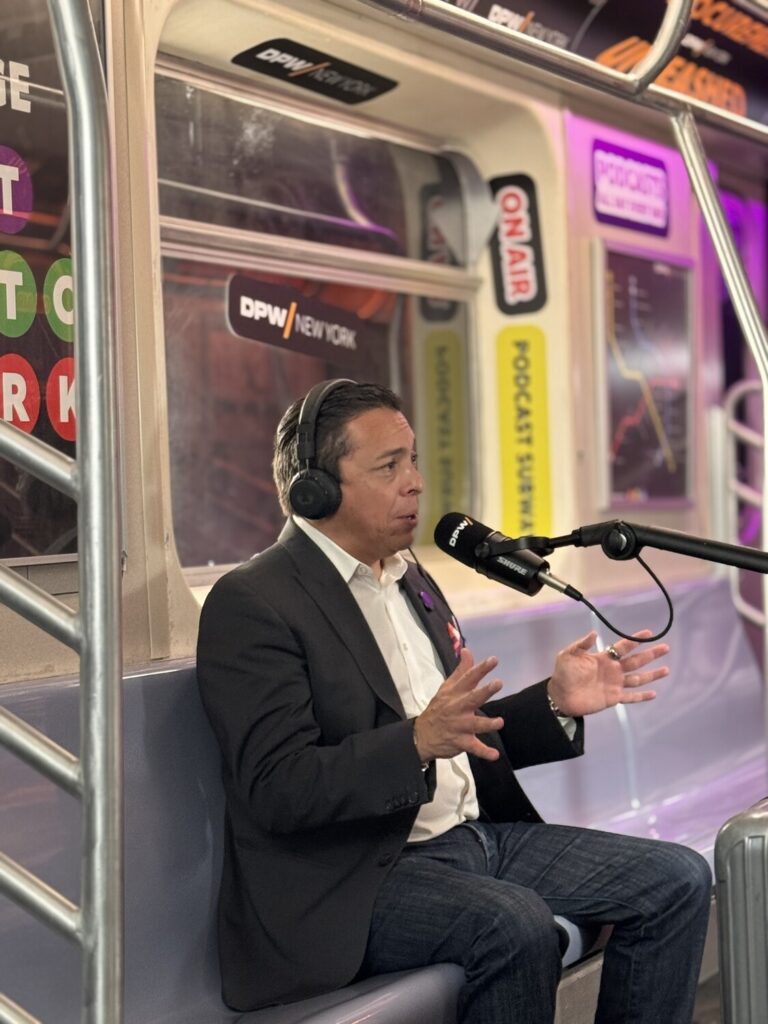
This subtle shift changes everything.
For example, in the case of DPW, we could ask (but it’s easy to adapt the questions to any industry or space):
- Instead of: How do we make procurement 10% faster?
- Ask: What would procurement look like if it was designed natively with AI at the core?
- Instead of: How do we reduce costs in supply chain management?
- Ask: What if AI could redesign the supply chain itself to deliver on customer promises, sustainability goals, or brand values—not just cost savings?
- Instead of: How do we train employees to use AI tools?
- Ask: How can humans and AI collaborate as partners, each amplifying the other’s strengths, to create outcomes that neither could deliver alone?
Beyond the 10%: Unlocking Exponential Value
Many organizations are focused on incremental gains, “the 10% mindset.” They implement AI in pockets, see some efficiency, and check the box. But the real opportunity lies in connecting workflows across silos. We could also call this group, “the 95% crew” if you read the recent MIT reportthat purported that 95% of generative AI pilots fail. As I shared in a recent analysis of that study, if you want bigger and better outcomes, you have to be bolder and more imaginative than in the past.
If you do what you’ve always done, how can you expect different outcomes. Yet, we do.
McKinsey’s QuantumBlack recently studied an array of generative AI use cases and found the highest returns didn’t come from isolated projects. Out of 25 attributes tested for organizations of all sizes, the redesign of workflows had the biggest effect to see EBIT impact. Said another way, instead of AI making one function better, it made the entire enterprise smarter and more profitable.
For procurement, that means moving from being a cost optimizer to being a strategic value creator. But I guess this is true for every industry and function. Imagine AI not just automating sourcing steps, but orchestrating how procurement ties into supply chain, product development, sustainability, and customer experience. Again, this is true as you reimagine work and workflows. This is no longer incremental improvement, it’s now about unlocking business model reinvention.
Escaping the Iterative Mindset
One of the biggest barriers to innovation is psychological. Even when leaders are asked to “think outside the box,” they bring their own industry box with them. Any brainstorm is still constrained by prevailing biases and assumptions, just dressed up with new buzzwords.
To truly innovate, we need to temporarily suspend expertise. Look at the most innovative companies outside your industry. Study their culture, their organizational design, their use of AI. Ask: What lessons can we borrow? And ask, what are they not doing?
When you shift your frame of reference, you stop seeing AI as just another tool for efficiency. It suddenly becomes an ‘AI status quo.’ You start to see it as an invitation to reimagine what your function could become in service of growth, customer value, and future relevance.
Platforms, Agents, and the Future of Work
At ServiceNow, we think of ourselves as the platform for AI-powered business transformation. AI by itself doesn’t transform businesses, it needs a foundation. And that foundation is rooted in mindset.
The future is agent-driven. Imagine workflows where the interface is the agent, where AI agents roam across siloed systems, pull in data, orchestrate processes, and deliver business outcomes without a human clicking through screens. In the process, they’re also learning, improving, and scaling in ways traditional IT stacks never could.
For leaders, this requires a mindset shift: stop reinforcing legacy processes with new tech. Instead, design workflows and strategies for the AI economy, a world where scale, speed, and creativity are no longer bound by headcount or historical silos.
My Personal Mindshift
I live these conversations every day with companies all around the world. I experiment with wearables like the Limitless Pin, which records and structures conversations into small language models I can query later, and then connects to larger models for insight. I use Meta’s AI glasses not just as hardware, but as an extension of my capacity in the real world and also cognition, translating languages in real time, narrating historical context as I walk through cities, and augmenting my curiosity in ways I couldn’t before.
Each of these experiments challenges me to think differently. They remind me that AI doesn’t have to replace us, with vision, it can extend us. The outcomes are efficiency gains and they’re entirely new ways of living, working, and creating. But that’s up to you. Start by asking WWAID?
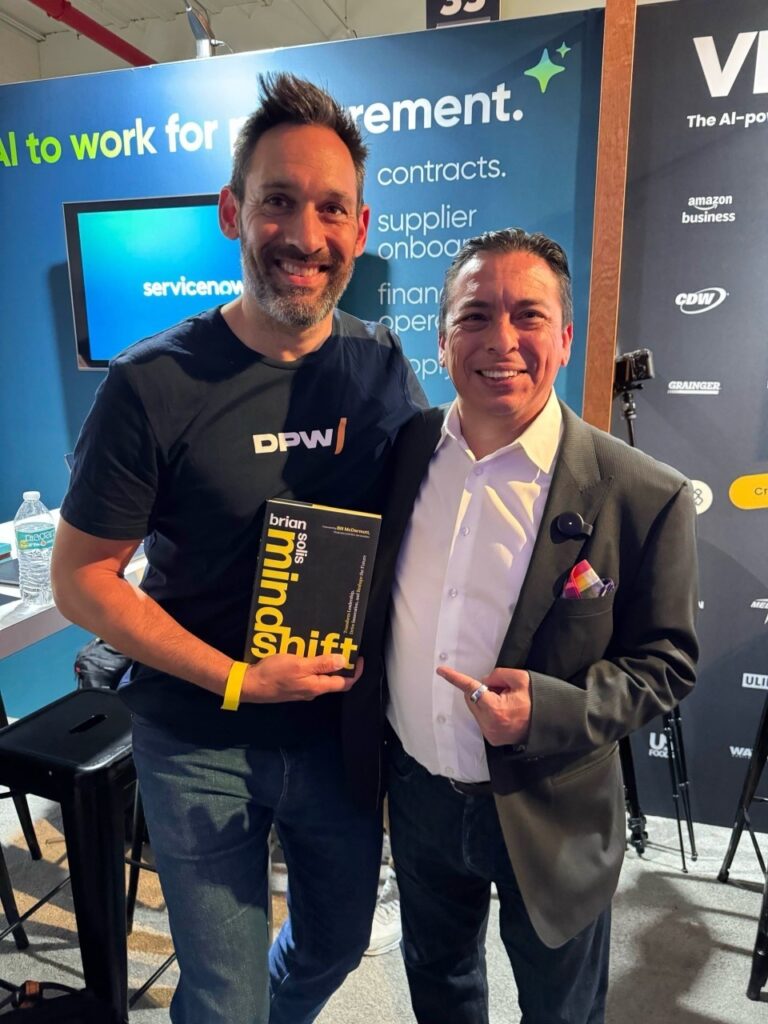
A Call to Leaders
This is the moment for leaders to stop chasing incremental optimization and start defining what’s possible in an AI-driven future. Ask what would AI do if it were designing my function, my business, my industry from scratch? #WWAID
That’s where transformation begins. That’s where disruption becomes opportunity. And that’s the mindshift every leader needs to embrace.
—
🔗 Please listen to my full conversation with DPW to hear these ideas explored in depth, and to start asking yourself: What would AI do? #WWAID
🎥 Please watch my keynote at DPW NY.
Mindshift | Speaking | Newsletter
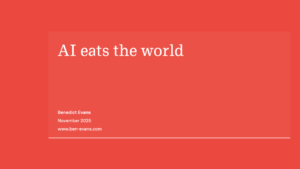

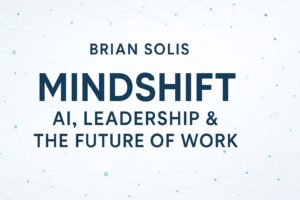


Leave a Reply